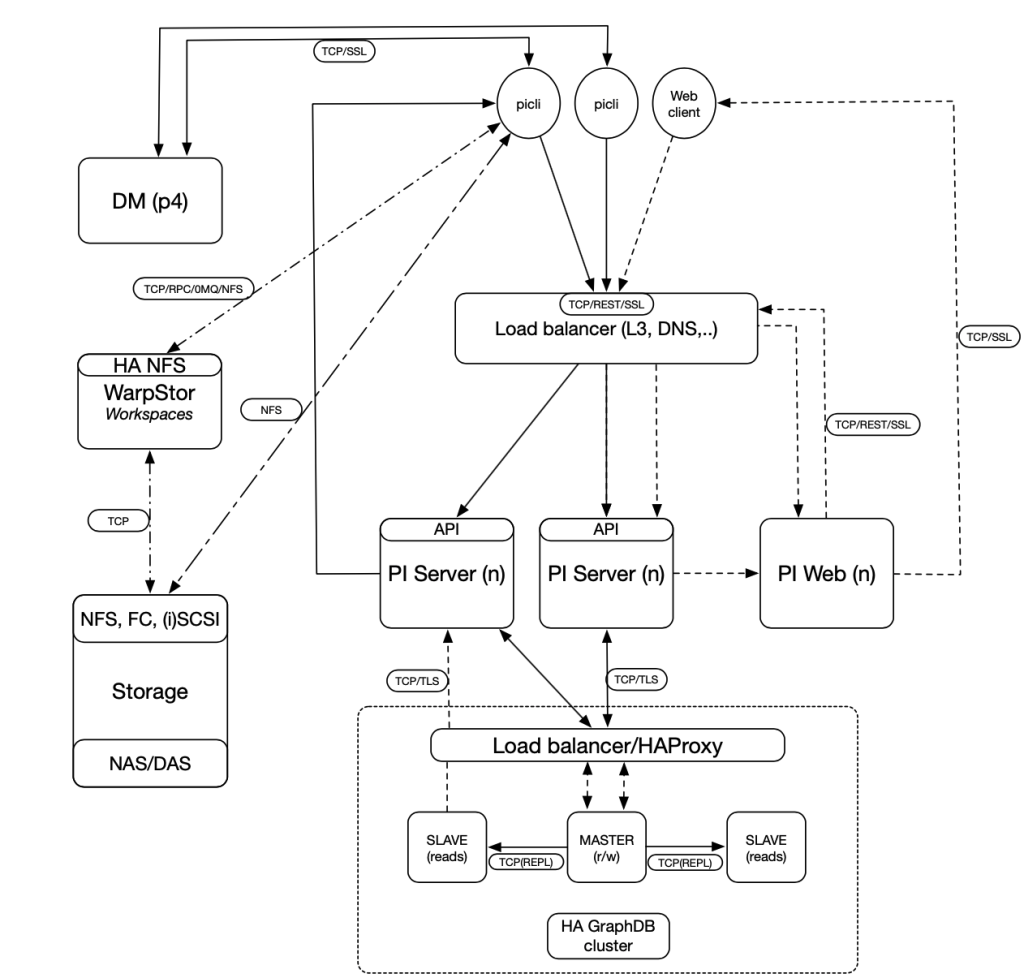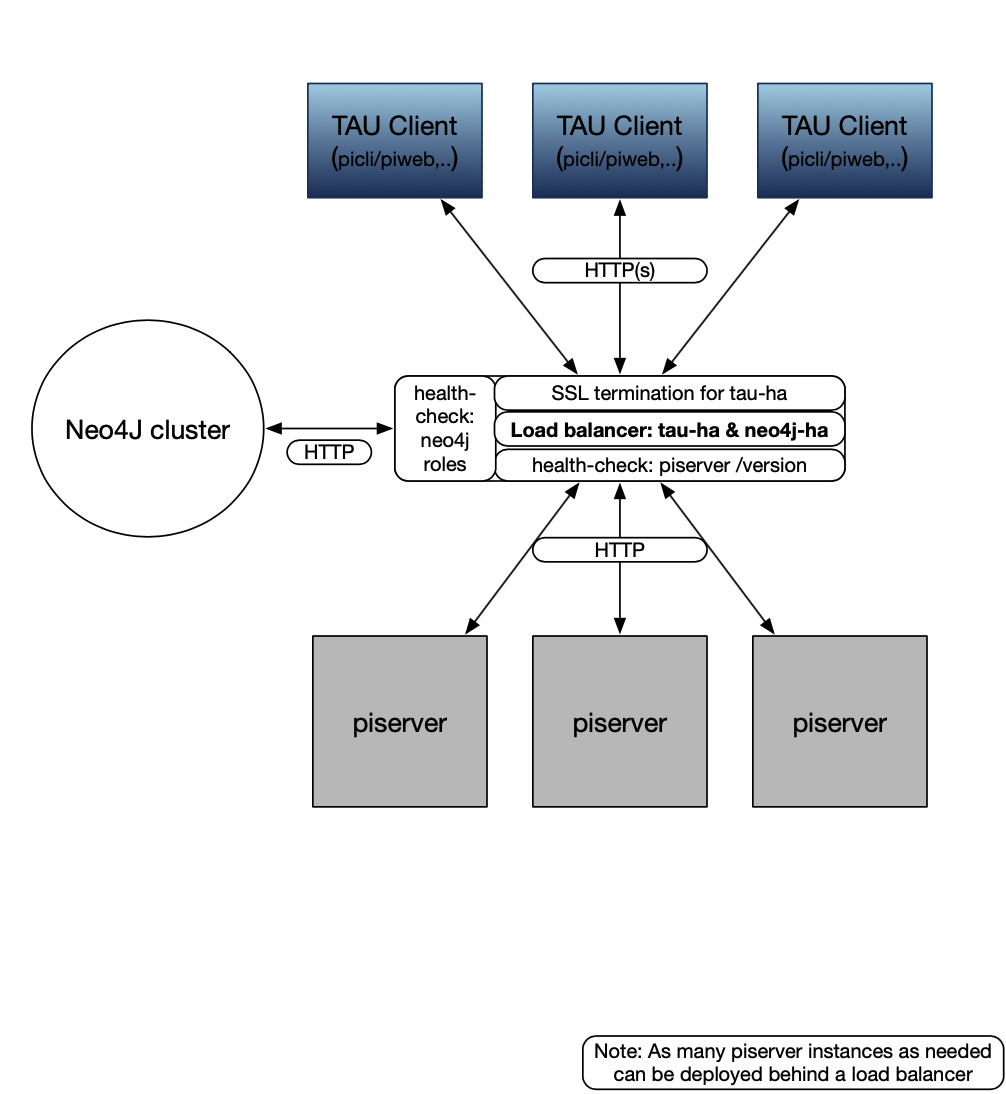IPLM High Availability with HAProxy and Neo4j cluster
Learn how to deploy Perforce IPLM and Neo4j in a High Availability (HA) configuration.
As shown below, Perforce IPLM server can be installed in HA mode. HA mode includes multiple instantiations of the server, with a load balancer in front. On the backend, Perforce IPLM uses a single or clustered Neo4J instance.
Perforce IPLM HA architecture

Components
The HA configuration has the following components:
- A single or clustered Neo4J instance.
- A load-balanced or redundant Perforce IPLM deployment. In those configurations, Perforce IPLM server runs on two or more separate physical servers or virtual machines.
- The two or more servers have identical configurations, and will talk to the Neo4J (single or clustered) instance directly or through the load balancer.
- A load-balancer in front of the Perforce IPLM servers shall either:
- distribute the load across the origin Perforce IPLM servers
- failover to a secondary Perforce IPLM server when the primary is out of rotation.
PiServer HA

Prerequisites
These instructions apply to the following software components.
-
PiServer 2.35.0 or later releases
For 2.34.x releases, some manual steps are needed. See below for details.
-
Neo4j Enterprise version 3.5.3
-
HAProxy 1.5+
-
JAVA-8 for all the PiServer and Neo4j cluster nodes
-
Perforce licenses for each node in the Neo4j cluster
Next steps:
-
Perforce IPLM High Availability with HAProxy and Neo4j cluster: Installation
-
Perforce IPLM High Availability with HAProxy and Neo4j cluster: Manage and configure Neo4j cluster
-
Perforce IPLM High Availability with HAProxy and Neo4j cluster: Deploy IPLM Server
-
Perforce IPLM High Availability with HAProxy and Neo4j cluster: Deploy HAProxy
Related information